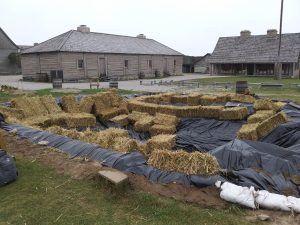
The 65th season of archaeological excavation at Michilimackinac wrapped up August 24 and the site is now secured for the winter. This was our 17th season of work on House E of the Southeast Rowhouse.
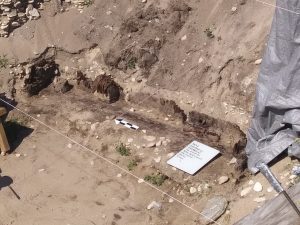
The most interesting finds of the second half of the field season were remnants of the house itself. The house was burned when the community relocated to Mackinac Island in 1781. The charred wood of the house was partially preserved in the sandy soil the fort was built on.
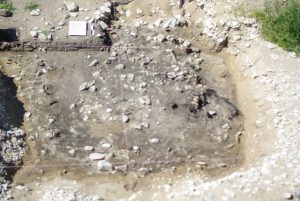
One of the defining features of this house is its two cellars. Most of the central cellar (except a portion of the northwest corner) is now five and a half feet deep. Remnants of the burned wall posts can be seen along the edges of the gray sand cellar deposit in the center of the image. The eastern half of the central cellar was also better defined. This cellar had plank walls and remnants of the walls and a floorboard were exposed this season.
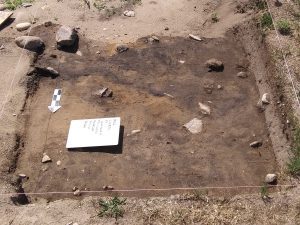
We were able to identify humic stains from the north wall of the house (the dark soil at the top of the image). Unfortunately we also confirmed that the tree stump we have been working around is right in the center of the east end of the wall trench. In the image you can see how the stump is in line with the reconstructed house wall of another unit of the rowhouse and the dark wall trench stain at the bottom of the image. The tree was not there when the house was; it was planted around 1910 shortly after Michilimackinac became Michigan’s second state park. The roots do not seem to have grown around artifacts, rather they displaced artifacts as they grew.
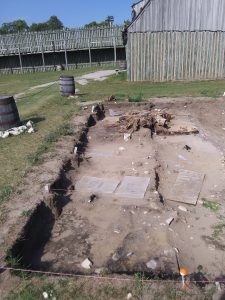
Stay tuned to the MSHP blog to see what interesting things the archaeologists might discover in the lab this winter as the season’s artifacts are cleaned and better identified.









